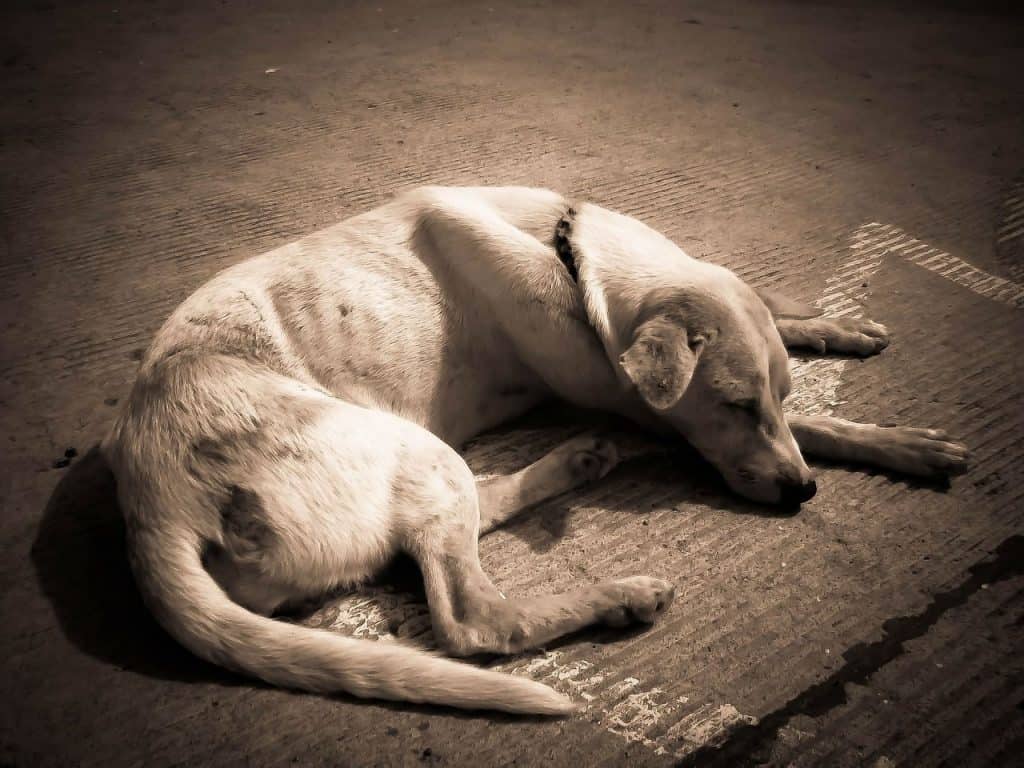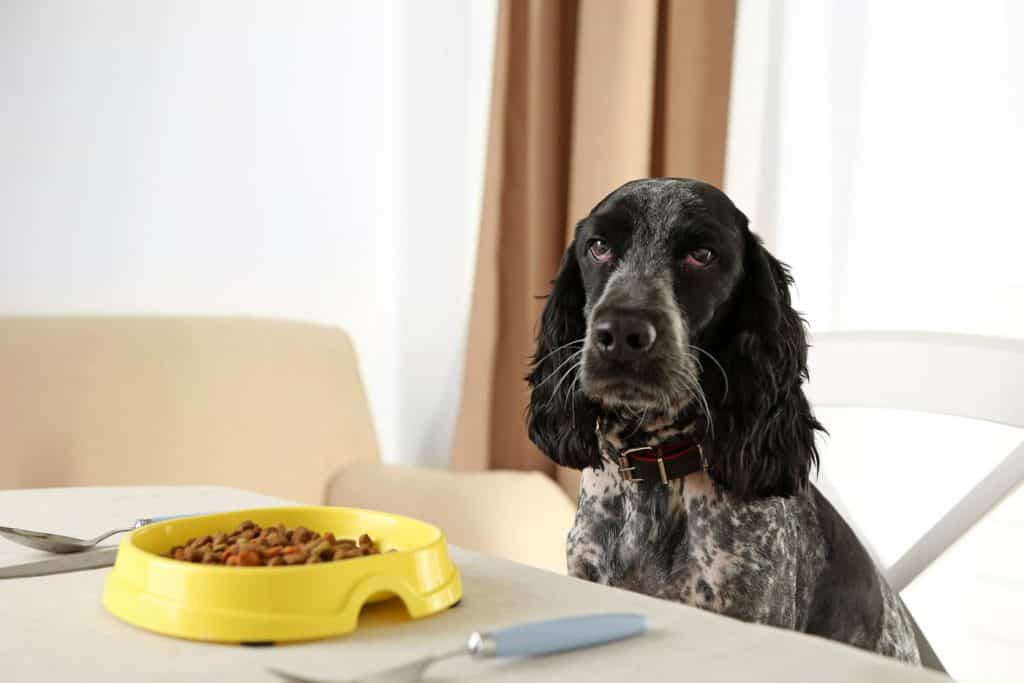If you are trying to learn how to fatten up your dog, whether your reason is that they are too skinny or look like they just need to add a few pounds, we are here to help you.
It is important to know how to fatten up your skinny dog correctly. You can actually overfeed your dog in this process leading to an unhealthy weight gain. Make sure you follow our steps to promote a healthy weight gain in your dog.
Before You Start
Remember, before starting a new diet with your dog that you consult your local veterinarian. They will help get you started on your dog weight gain journey as long as they say it is, in fact, necessary. Please note that we are not veterinarians, but we are here to help provide you with essential information on how to fatten up your dog.
Figuring Out the Cause
You will need first to figure out the reason behind your dog’s skinniness or inability to put on weight. Once you narrow down the reason, you will be able to formulate a game plan to help your dog get on the right track.
Illness
Dogs will stop eating food if they become sick. There is a variety of sicknesses that could cause your dog to stop eating their meals.
One of them could be a parasite infection. You may not even know it, but your dog could be infected with worms. This could damper their appetite dramatically. You may not even see the worms in your dog’s poop because that usually happens months after having worms.
Before you start to see them, they are wreaking your dog’s gastrointestinal tract. If you suspect your dog to have worms, make your dog an appointment to get checked out by the veterinarian.
Stress
Yes, dogs do get stressed out, it may be hard to believe, but they very well do get stressed just like us. If your dog seems to be having a lot of anxiety or stress, this can reduce their appetite and drive to eat. Stress can usually happen from a traumatic event with your dog.
Multiple Dogs
Sometimes having more than one dog in your home can make your dog feel sad. Especially if you have just gotten a new dog, your dog may experience not wanting to eat for a while. Of if you have multiple dogs, the new dogs could be eating your other dog’s food, causing them not to get any, and they will start looking underweight.
Trauma
Dogs can experience significant trauma from multiple different things. They could have stress and anxiety from a loss of a family member, or coming from a rescue home, or even trauma from their past with bad owners.
Dental Issues
If your dog has missing teeth or mouth sores, this could be yet another reason why they may not want to eat. You may not even know about these mouth sores, so it is important to check your dog’s mouth periodically.
Dog Pregnancy
Your dog may even experience weight loss when they are pregnant. Yes, hard to imagine when your dog definitely looks bigger, but those puppies your dog is carrying are taking all the nutrients from the mother. You may need to increase meals if your dog is pregnant.
Low Quality Food
Some dogs are picky eaters, and they will be stubborn and not eat anything until they get the food they actually want. You may need to change up your dog’s food a few times before finding the kind they will actually eat.
Try to pick out a high quality dog food that is packed full of protein to keep your dog fuller longer.
How to Fatten Up a Dog
Here you will find all of our steps and tips to help your dog gain a few pounds. Depending on the goal you make, you may only need to help your dog gain a few pounds while other dogs might need to gain a lot more.
Set a Goal
Before you start feeding your dog more, you need to discover what your specific dog’s goal is. What is the healthy weight for your dog based on their gender, size, and breed type is what you need to ask yourself. Remember, you can always contact your local veterinarian to help you formulate a goal for your dog.
Add Calories
One of the easiest ways to add weight to your dog is by adding calories. This is a slow progress, so don’t just give your dog a giant bowl of extra food a day because they will cause other issues that will only worsen the situation.
You typically don’t want to add more than 10% of your dog’s current calorie count they get each day. You can start with this for the first week or two, and as long as your dog is responding well not throwing up or getting diarrheas, then you can increase the calorie intake by another 10%.
Diarrhea will be a big indicator that you have increased your dog’s calorie intake by too much. So, if this is something you notice, do the calculations again and start by only doing 5% more of your dog’s calorie intake.
Change Up The food
Try switching up your dog’s food to a higher quality dog food that promotes weight gain for your dog. If you cannot find a dog food within those parameters, then try finding one that is made up of a lot of protein.
The first few ingredients should contain a high-quality protein such as chicken, fish, beef, or even lamb. You want a protein ration of about 20% of your dog’s food. Try to find healthy carbohydrates made from sweet potatoes, carrots, and other healthy vegetables.
Try not to get a food with a high fat content because this can lead to excessive fat weight gain that can cause more problems than good.
Cheap dog foods contain proteins of low quality and use a lot of fillers that just aren’t good for dogs. Try to get a high-quality brand recommended by a veterinarian.
Feeding Schedule
Try and get your dog on a routine feeding schedule; this is an essential way to help you fatten up your dog. Three to four meals that are smaller throughout the day will help your dog get extra calories but also help them digest their food easier.
When you feed your dog on a schedule, this allows their metabolism to work faster.so try to stay on every four-hour schedule.
Also, this allows you to track your dog’s meals better. You will know exactly how much food they have consumed because you have it all so organized.
Food Supplements
Food supplements are another great way to ensure your dog gets all the essential vitamins and minerals your dog needs for a healthy diet. There are supplements out on the market, like the Dyne High Calorie/Weight Gainer Liquid for Dogs, that can be added right to your dog’s wet or dry food.
As an Amazon affiliate, we earn from qualifying purchases at no cost to you.
This is an amazing way to boost flavor, give your dog high-quality calories, and give them essential vitamins like vitamin B for energy. You can find other supplements, but I truly believe that the Dyne Weight Gainer Liquid is the best.
Praise Your Dog After Eating
Your dog will be new to eating this much food and adjusting to the new schedule you have set; it doesn’t hurt to praise your pup after they eat all their food.
It is important not to give them human food as treats after they eat all their food. Praise them with love and words of affirmation.
If your dog doesn’t eat the entire bowl of food, you can try hand feeding them the rest. If they still don’t want anymore then do not worry, still praise them, and hopefully little by little, they will eat more food.
Exercise Your Dog
It doesn’t matter if your dog is underweight; all dogs need exercise to promote a healthy lifestyle and diet. Exercise can help your underweight dog get muscle growth, and it will help them burn calories that will increase to appetite to eat.
Also, with the high protein dog food, you will be feeding your dog; they will need an outlet for all the energy they will have.
There are many ways to get exercise in for your dog. You and your dog can bond together by taking a walk. This is a great way to spend time together, but you are also helping your dog’s health.
Maintain Results
When your dog finally meets their goal, it is important to maintain that; that way, their weight doesn’t start to slip back down or become too much, and they start getting overweight.
If your dog has met their goal, make sure you stop the extra calorie intake and return to a normal eating routine. You still want to feed your dog a high-quality dog food, but just not as much.
If you need more guidance on a normal eating routine for your dog, then I highly suggest you seek a veterinarian’s advice and guidance with that.
Conclusion
I hope this opened up your eyes on how to fatten up a dog in a safe way. There are multiple steps to take and a ton of things to consider. Be patient with your dog because this process may take a while; I wanted to make sure I covered everything you possibly need to know. If you have any other suggestions on how to fatten up a dog, leave them down below.







